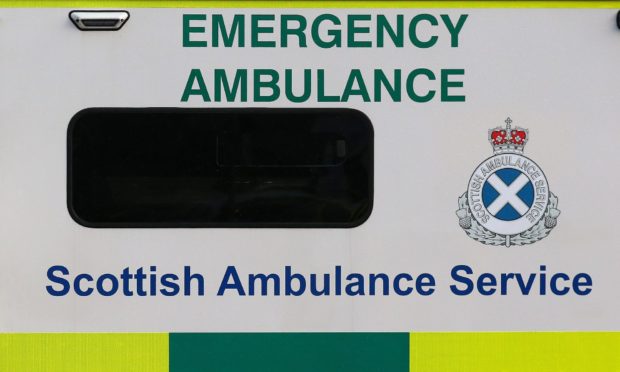Residents in an Angus town can be waiting more than 10 minutes longer for an ambulance than neighbouring places in the district.
Performance statistics from the Scottish Ambulance Service highlighting the challenges facing the area throughout pandemic-hit 2020 have revealed mercy crews took longer to reach life-threatening Brechin patients than those in Forfar or Montrose
In the most urgent call-out category last year, data for the 90th percentile performance (nine out of ten cases) showed a Brechin figure of 29 minutes and 16 seconds.
The wait for purple category patients was a rise of more than ten minutes compared to the previous year and almost 15 minutes longer than in 2018.
The median Brechin response time was 13:22, compared to 11:14 in 2019.
There were 26 call-outs in the top priority category, three more than the previous 12 months.
It compares neighbouring Montrose where, in the worst cases, ambulances arrived after 18 minutes and six seconds.
That 90th percentile figure was an improvement on 2019 where it took 26 minutes.
Median Montrose performance for last year was a second over eleven minutes – a 40 second improvement on 2019.
There were 42 purple call-outs, down six from the previous year.
Forfar saw a wait of more than 19 minutes for life-threatening situations compared to 18 minutes in 2019 and 13 minutes in 2018.
The median response time for the town was 14 minutes and nine seconds, a shade under five minutes slower than 2019.
Purple category incident dropped to 48 from 63 the preceding year.
Range of factors
Scottish Ambulance Service chiefs have said a range of factors can affect the response times of staff working “incredibly hard” in the face of pandemic challenges.
It aims to respond to 75% of immediately life-threatening calls within eight minutes.
Forfar and District councillor Braden Davy said the data obtained by the Scottish Conservatives had revealing concerning local disparities.
He said: “In life-threatening emergency situations, every second counts, and it’s concerning to see the impact these varying times can have on communities like Brechin.
“To wait 10 minutes longer than Montrose will be worrying to residents especially in critical situations like these.
“Our first responders do a terrific job and the challenges of Covid as well as the bad weather adds more pressure to their already busy schedule.
“This makes it all the more important to treat our ambulance service with the respect they deserve and to only call 999 if absolutely necessary,” said Mr Davy.
“In the last year, national figures show eight out of 10 calls made to the service did not actually require an ambulance.
“But this issue will not explain the discrepancy, and it fits into a picture of rural Angus seeing healthcare provision reduced. Access to Minor Injury Units have been curtailed, and it’s becoming harder to access GP services.
“The extra time it takes for ambulances to arrive could be the difference between life and death.”
Scottish Ambulance Service response
A Scottish Ambulance Service spokesperson said: “Our staff work incredibly hard providing care and saving lives along with the additional pressures that have been experienced during the Covid pandemic.
“Response times can be affected by a range of factors, including increased infection control measures due to coronavirus, incident location, adverse weather, road conditions and hospital turnaround times but we are doing our absolute best to get to our sickest patients as quickly as we can.
“We dispatch the nearest available ambulances to our highest acuity calls and have access to a network of community first responders, air ambulances and paramedic response units,” they added.
“We are also continuing to invest in new ambulance staff, new ambulances and the latest equipment as we develop and grow our workforce at pace to respond to the demands made for our services,” the spokesperson added.
